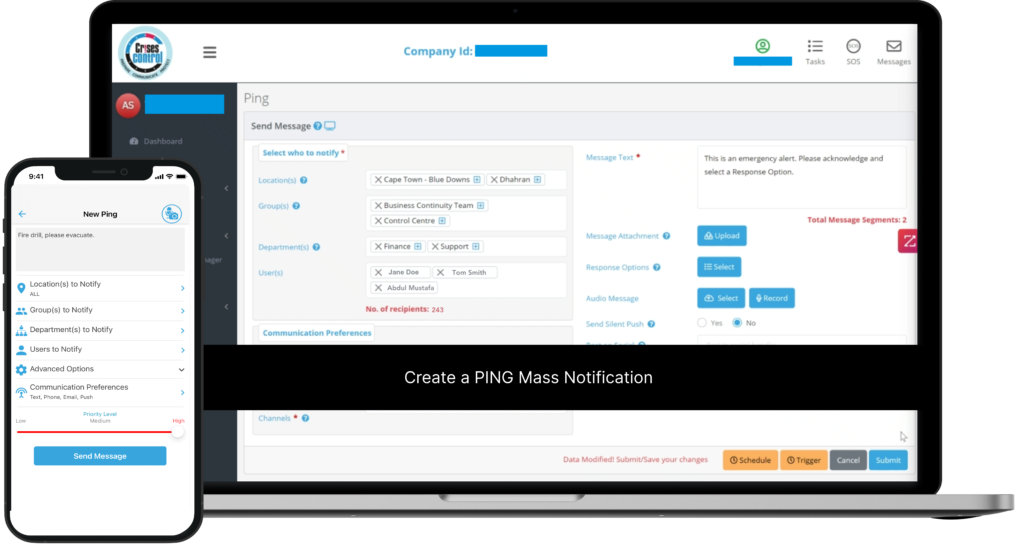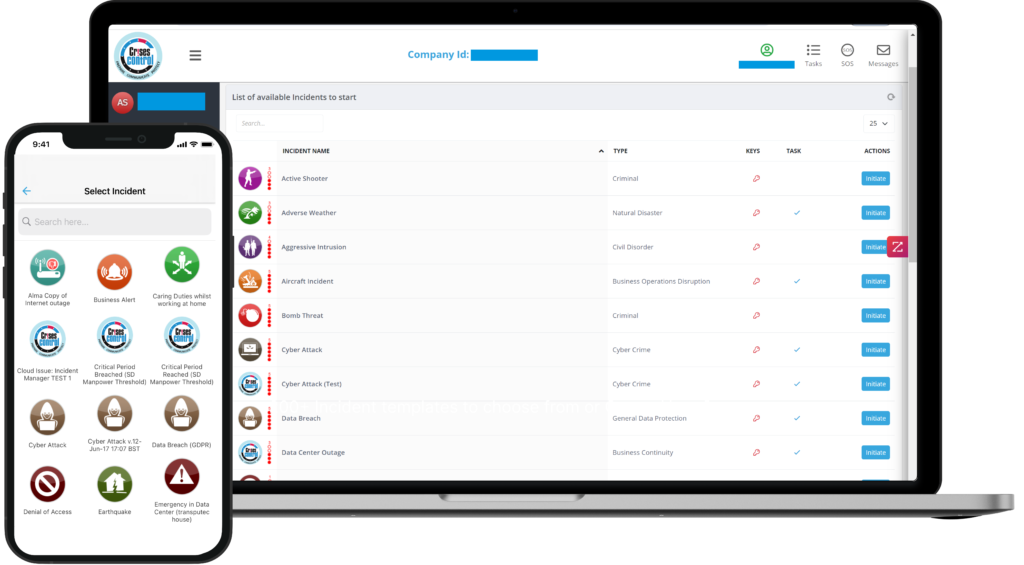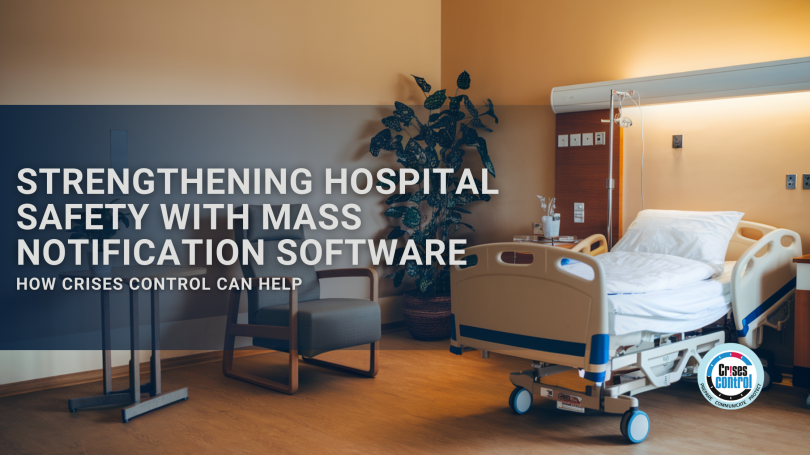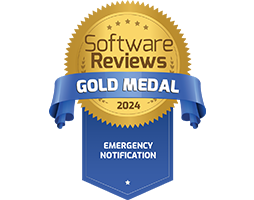Written by Anneri Fourie | Crises Control Executive
Hospitals are places of care and healing, but they’re also complex, high-pressure environments where things can change in an instant. With thousands of people moving through their doors every day—patients, staff, visitors, contractors—it’s no surprise that hospitals are facing increasing challenges when it comes to safety and emergency response.
Sadly, violence and security incidents in healthcare settings are on the rise. According to the World Health Organisation (WHO), healthcare workers face a higher risk of violence than any other profession. This includes everything from verbal abuse to physical assault and, in some cases, active threats involving weapons. The question facing hospital managers and security leads is no longer if something will go wrong, but when—and how prepared their teams will be to respond with the right tools, like Mass Notification Software.
Relying on overhead announcements or outdated panic buttons is no longer enough. Mass Notification Software gives hospitals a fast, reliable, and discreet way to raise the alarm, inform the right people instantly, and coordinate an effective response.
Why Hospital Security Needs a New Approach
Unlike schools or offices, hospitals are open-access. People can come and go freely, which makes them harder to secure. While most have security teams, these teams can only respond effectively if they’re alerted quickly, and silently.
Announcing a threat over a PA system can cause panic, especially in areas like maternity wards, A&E, or psychiatric units. It can also escalate the situation if the aggressor realises they’ve been spotted.
What hospitals need is a way to trigger a silent alarm that goes directly to the right people; security, management, or emergency services, without alerting the wider public.
The Role of Mass Notification Software for Hospitals
Mass Notification Software for Hospitals is built to send alerts to specific groups or individuals instantly. These alerts can be silent and delivered through various channels, such as:
- Mobile push notifications
- SMS
- Emails
- Voice calls
Integration with hospital systems like access control and nurse call stations
Let’s say a nurse sees a patient’s family member acting aggressively. Rather than raise their voice or cause alarm, they tap a button on their phone. Within seconds, a silent alert is sent to the security team with the nurse’s exact location and a short description of the issue.
This is more than just sending a message, it’s about making sure the right people get the right information as quickly as possible. And when it’s paired with a built-in incident response plan, it also tells those people what to do next.
Interested in our Ping Mass Notification Software?
Efficiently alert everyone in seconds at scale with our Mass Notification Software – PING, get the message out fast and ensure rapid response and recovery.

What Makes a “Smart” Silent Alert?
A smart silent alert doesn’t just notify someone, it kicks off an entire process. This includes:
- Location data: So responders know exactly where to go
- Pre-set roles: Ensuring each person involved knows their responsibility
- Real-time updates: Keeping everyone informed as the situation evolves
- Secure communications: Allowing coordination without relying on public channels
- Incident logs: So every action is recorded for compliance and review
These aren’t just nice-to-haves, they’re critical when you’re managing a threat involving hundreds of people, multiple wards, and potential lockdown scenarios.
Why Crises Control is Built for the Job
At Crises Control, we’ve developed a solution that goes far beyond basic alerts. Our Mass Notification Software is used by organisations around the world to protect people, reduce response times, and ensure operations run smoothly during emergencies.
Here’s how we help hospitals strengthen their safety and response:
SOS Panic Button
Staff can silently trigger an alert via their phone or computer with our SOS Panic Button. It’s fast, discreet, and sends an immediate notification to predefined responders, complete with location data and threat details.
Ping Mass Notification
This feature lets you send time-sensitive alerts to specific teams or groups via multiple channels; SMS, email, push notification, and more. Whether it’s a lockdown instruction or an internal update, you’ll know your message has been received and read.
Incident Management Software
Once an alert is raised, Crises Control’s Incident Manager enables you to launch a customised incident plan. Live dashboards, task lists, and secure messaging help your team manage the event in real time, no need to jump between apps or chase updates.
Seamless Integration
Our platform integrates with hospital systems like access control, nurse call stations, and building management platforms. For example, if a door to a restricted area is forced open, the system can trigger an alert without anyone needing to press a button.
Mobile-First Design
Our mobile app ensures that even if your network is down, due to a cyberattack or IT issue, your staff can still raise alerts and receive updates through their phones.
Full Audit Trail
Every action is logged, from the first alert to the final resolution. This helps with post-incident reviews, staff training, and compliance with healthcare regulations.

Interested in our Incident Management Software?
Customise your Crisis Incident Management Software to meet your specific needs with our flexible tools & stay connected and informed during the crisis and incident management process
Why Waiting Isn’t an Option
Many hospitals only invest in new technology after something has gone wrong. But when it comes to safety, delay can be dangerous. The cost of inaction isn’t just measured in lost time or money, it can mean lives at risk, staff traumatised, and reputational damage that lasts for years.
Smart, silent alerting systems help hospitals move from reactive to proactive. They give staff the tools to act immediately and with confidence, knowing they’ll be supported by a clear process and the right people.
Choosing the Right System for Your Hospital
If you’re considering a mass notification platform for your hospital, here are a few things to look for:
- Multi-Channel Alerts: Make sure the system can send alerts via SMS, push notifications, voice, email, and desktop.
- Discreet Activation: Your staff should be able to raise an alarm silently from a mobile or desktop device.
- Real-Time Incident Management: Having alerts is good, managing the whole response in one place is even better. Look for built-in coordination tools like dashboards, task lists, and messaging.
- Integration Capabilities: A good system should work with your existing hospital infrastructure.
- Offline Functionality: Ensure that alerts still work even if your main network goes down.
- Reporting and Audit Trails: Every alert and action should be automatically logged for training and compliance.
Crises Control offers all of this—built into one secure, cloud-based platform specifically designed to meet the needs of high-risk environments like hospitals.
Benefits at a Glance
Crises Control helps hospitals:
- Discreetly raise the alarm in seconds
- Keep staff, patients, and visitors safe
- Coordinate responses in real time
- Integrate with existing hospital systems
- Comply with healthcare safety regulations
- Maintain communication during outages
Conclusion: Better Tools, Safer Hospitals
You can’t prevent every threat, but you can be ready to respond to it. Silent alerts and smart mass notification systems give your hospital the edge when it comes to safety. They help you act quickly, avoid panic, and protect the people who matter most.
If you’re looking for a system that’s easy to use, highly reliable, and tailored to your environment, Crises Control can help.
Ready to see how Crises Control can transform your hospital’s emergency response? Contact us today to get a free personalised demo.
Request a FREE Demo









